If the Fender Stratocaster is the most imitated guitar design in the world, the Gibson ES-335 arguably comes in second. Any time imitations arise, they beg to be compared to the original, a process that is sure to generate debate, mythology, passionate attacks and equally passionate defenses. A brief review of the comments section of our recent Strat For Any Budget article will confirm this. You would think that the 335 universe would be as straightforward as the Strat world, but the a deeper look reveals a wider market and bit more complexity.

Just as the Strat created a universal template for a versatile solid body guitar, the ES-335 did the same for semi-hollow guitars. First produced in 1958, the 335 was game-changing in taking the benefits of hollowbody construction (resonant, woody tone) and eliminating the drawbacks (vulnerability to feedback). Its success disrupted the market, pushing many companies to try their own semi-hollow designs. Gibson, for their part, recognized this and tried (unsuccessfully) at one point to copyright the two-dimensional outline of the ES-335. However, legal threats did little to stop competitors - and Gibson’s own subsidiaries - from trying to get a slice of the 335 pie, from early ‘60s Univox imitations to the late ‘70s Ibanez Artist series to more recent tributes from Eastman and Heritage.
While the market for 335-style guitars is tiered, just as it is for Strats, the price gaps between the tiers are much wider. A genuine made-in-Memphis ES-335 is a lot less financially accessible than an American-made Stratocaster, on the order of $1600 versus $700 when looking at the most affordable used specimens. This is partly because semi-hollow electric guitars are harder to build well, but also because culture and sentimentality drive the price, warping the supply and demand curve past the point of mere utility and labor costs. People are willing to pay a lot for what they see as the real thing. This is where the conversation gets interesting.
Even the Gibson ES-335 Studio and the short-lived Gibson ES-333 (designed to be an affordable alternative) hover around the $1300 mark. For that reason, we only looked at humbucker-equipped semi-hollow guitars with dimensions and scale length approximating that of a current Gibson ES-335 that cost less than $1300 used or new. Read on to see what we picked, what makes each model unique, and which ones resonate with us the most.

Woody, resonant, mellow. The air inside the hollow wings might dampen the spank and snap you get from a solid guitar, but it’s that exact quality that gave the 335 its own voice. The ES-335 seems to speak from somewhere lower in its body, somewhere further back in the throat, than earlier brightly-voiced Fenders. A good ES-335 specimen doesn’t reflect sound from its surface, but seems to generate it inside the body. Some qualities hit you right away - the satisfying proportions and balance of the guitar, the pure intonation along the entire length of the fretboard - while others exist at the margins, like the range of tonal information you can get when plugged in from different pick attacks, bends and volume levels. Greatness exists at the margins, and this is where the Memphis models shine. The longer you play it and push its abilities, the more you get it.
Find a Gibson ES-335 on Reverb
Analogous to Fender’s Squier Stratocasters, the Epiphone Dot is Gibson’s own made-in-Asia model for those looking for an affordable 335. There aren’t a lot 335 options in this price range, so Gibson kind of has this tier cornered. The quality it can produce at this price point with all its resources is impressive, so we’re not complaining. If you just want to get a feel for a semi-hollow or want a versatile first guitar, this is a great place to start.
Find an Epiphone Dot on Reverb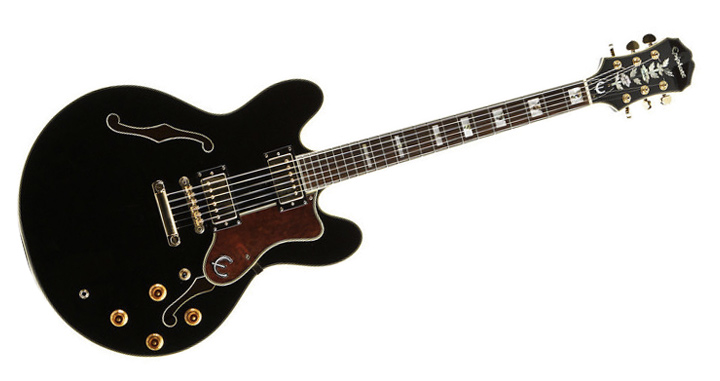
Expectations are a funny thing. You pick up the Sheraton II - which we think looks pretty darn sexy in black with a tortoiseshell pickguard - look at the price tag and think, “This is going to have no character, fall out of tune quickly and not be fun to play.” Then you plug it in and play those first few notes. And you are totally wrong. About everything. It just makes you want to play every blues and jazz lick in your repertoire, happily singing along with a voice slightly brighter than a 335. This is likely because of its maple (rather than mahogany) neck. The pickups sound like slightly thicker single coils, with plenty of attack, which we reckon is a good thing. It may not have the subtlety or nuance of an ES-335, but make no mistake: the Epiphone Sheraton II is intended to be someone’s main guitar, not as a beginner or a cheap guitar added to your arsenal just to have a semi-hollow on hand.
Find an Epiphone Sheraton II on Reverb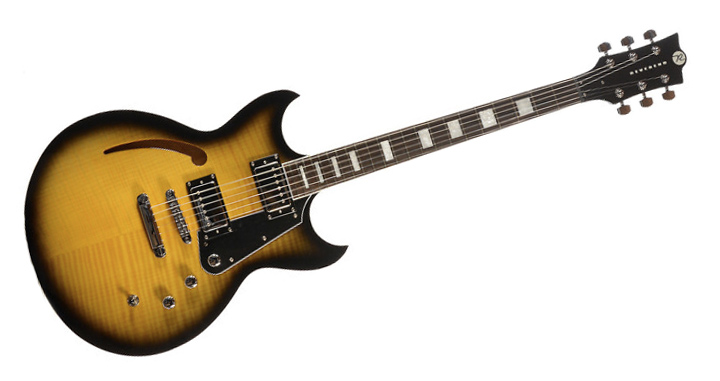
Some people reading this might cry foul that we picked a guitar that doesn’t look like a 335 and is made from korina rather than maple. Bear with us. Reverend consistently produces great guitars at an affordable price, and though they don’t make a model that looks exactly like a 335, they do make a mean semi-hollow guitar. Rather than using laminate, Reverend carves the back and sides out of solid korina, leaving a center block from the same piece of wood. This means greater sustain and structural integrity. When paired with a maple top and dual humbuckers, this guitar screams. With sharp Johnny A double cutaways and an apostrophe soundhole, this is a semi-hollow for those that want to break from tradition and turn heads.
Find a Reverend Manta Ray on Reverb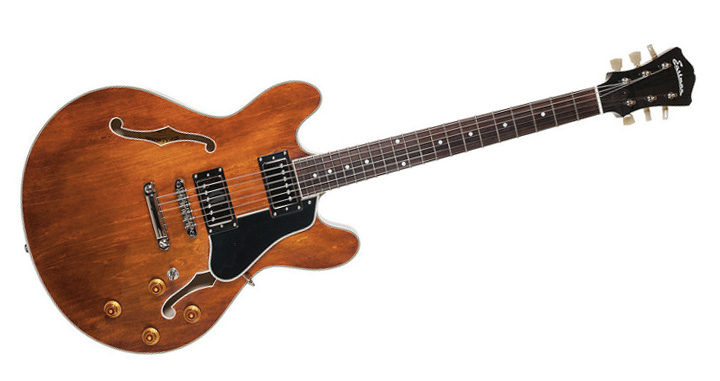
The Eastman T386 is probably the most traditional pick within this price range. Aside from Kent Armstrong humbuckers, this guitar follows the 335 template pretty faithfully: maple laminate body, rosewood fingerboard, same proportions and placement of controls, vintage tuners. Eastman produces some very respectable high-end guitars, especially in the jazz realm, and that institutional knowledge shows here. This is a quality semi-hollow for the traditionalist who doesn’t want to crack $1000.
Find an Eastman T386 on Reverb
Sometimes it feels like Ibanez can’t make a bad guitar. Similar to Fender, Ibanez manages to maintain strong quality control and precision throughout their line, from the $300 models all the way through the Tosin Abasi Signature. The AS93 has a brighter, more tactile feel than most semi-hollows, likely a product of the Super 58 Customs being wound for modern playing (read: higher gain). This may not be quite as mellow or nuanced as some of the other 335 alternatives, but it is nonetheless a dynamic and responsive instrument that could easily be someone’s main axe.
Find an Ibanez AS93 on Reverb
Like Ibanez AS93, the new Hagstrom Viking is not a nuanced, mellow blues or jazz box. Yes, it is semi-hollow and has funky vintage styling, but the it just feels like it wants to play rock when you’re noodling around on it. The fingerboard is made from Hagstrom’s own Resinator material, which feels exceptionally smooth and fast but ultimately still synthetic. This robs it of some of the warmth that a rosewood fingerboard gives a 335. It doesn’t feel cheap, but it also doesn’t feel organic and warm. This guitar has great value for the money, but don’t expect a woody or complex tone.
Find a Hagstrom Viking on Reverb.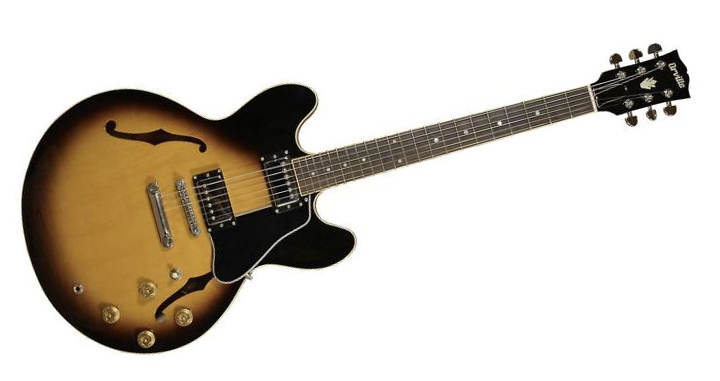
Gibson partnered with a Japanese manufacturer and licensed out their designs under the name Orville to compete with the Japanese copycat manufacturers on their own turf. You can think of Orville in the same way people regard Fender Japan models. Legit, but not quite as desirable on the market as US-made specimens when it comes to collectibility. But you’re not reading this because you’re a collector. Let’s be honest: these are rebadged Gibsons, built to the same specs and standards. However, those simply labeled Orville, instead of Orville By Gibson, had a cheaper polyurethane finish and Japan-sourced electronics. For players, we consider these a steal either way.
Find an Orville ES-335 on Reverb
I have to confess: I’m biased here because I bought one of these recently while preparing this article. I love these guitars, and I’m not the only one. John Scofield and Lee Ritenour were advocates of the Ibanez Artist Series guitars early on and still play them today. There’s good reason: the Super 58 humbuckers (post-1980) sound fantastic, the craftsmanship is impeccable, and the thin neck feels amazing. They also featured some of the most gorgeous violin sunburst finishes, especially with the bird’s eye maple specimens (birch was used prior to 1980), something that's rare on an ES-335. These are getting harder and harder to find these days, and the price is rising for the specimens you do see on the market. At some point Ibanez stopped trying to copy Gibson and succeeded in actually outdoing them in the late '70s and early '80s.
Find an Ibanez AS100 on Reverb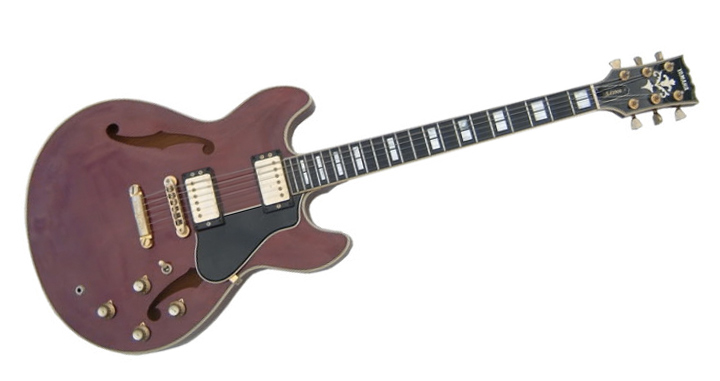
We know, we know. Playing an instrument with Yamaha on the headstock makes you feel like you’re back taking lessons playing a school-owned rental. But what if that Yamaha was a sweet vintage timepiece from the early ‘80s, when Japan was producing its best work? Similar to early Ibanez AS100 specimens, it featured a birch body and a violin sunburst or cherry finish. These are well-built, respectable replicas that continue to fly under the radar, making the likelihood of finding a great deal even better.
Find an Yamaha SA-2000 on Reverb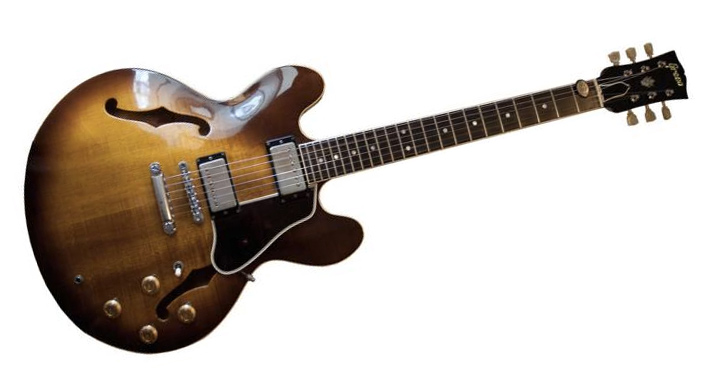
Like a pesky rival who reminds you that anything you can do they can do better, Greco produced some incredibly well-made copies of Gibson models during the late ‘70s, some that collectors even regard as superior to the Gibsons of that era. The made-in-Japan ‘70s Greco SA-900 is not a tribute or an approximation. Right down to the crown inlay on the headstock and the font used, this is a true replica of an ES-335, complete with passable PAF-style humbuckers. Unlike some Japanese copies built with CNC machines, these were mostly made by hand in the Fuji Gen factory. While they approximated some popular Gibson finishes, we like the beautiful violin sunburst finish they used. We’re being generous by including it in this price range. Demand for these has recently grown, and you’d be lucky to make a $1300 offer and have it accepted.
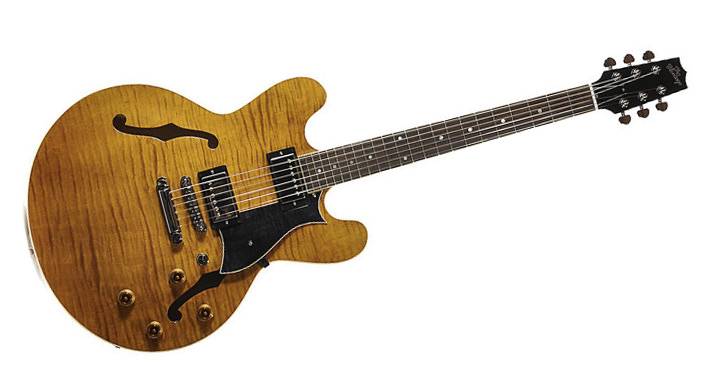
In terms of bloodlines, this is a close as it gets. The Heritage H-535 not only takes its design from the 335, but it’s actually built in the same factory with the same machines that Gibson used to build the originals. A beautiful pickguard with sweeping curves and Lollar Imperial humbuckers set this one apart. The smaller headstock might offend the aesthetic sense of some, but trust us: once it's in your hands, you’ll forget all about that. This is another model that barely squeezes into the sub-$1300 price range, but it’s possible if you find a competitively priced early ‘90s model.
Find a Heritage H-535 on Reverb
Realizing that really well-built, cheaper alternatives were taking away from ES-335 sales, Gibson decided to compete with the imitators head on. The Gibson ES-333 was made in the US as a stripped bare ES-335 with different humbuckers (exposed 490R and 498T in place of a covered Classic ‘57 pair), no pickguard, a thin satin finish, a silkscreened (instead of pearloid) logo and a plastic backplate to access electronics. It was only manufactured for three short years, from 2002 to 2005. The reason? It was taking away from ES-335 sales. Nonetheless, these are one of the most popular guitars to mod and 335-ize by swapping pickups and adding a pickguard.
Find a Gibson ES-333 on Reverb
The recently revived and refreshed D’Angelico decided to take on the 335 world with its own art deco design language. While the EX-DC may be the looker of the bunch, it’s probably the least 335-esque. The body feels much larger (even though it isn't), and the Kent Armstrong pickups don't have quite the same effect as vintage PAF-style humbuckers. The neck takes some getting used to, but this is not a bad guitar. It actually offers some of the best value at this price point, with tons of versatility and style to pair with a quality build. We just don’t see it as the axe to get if you’re obsessed with vintage 335 looks and tone. It is its own beast. And that’s precisely why we respect it.
Find a D'Angelico EX-DC on Reverb